UPSC Exam > UPSC Notes > Indian Polity for UPSC CSE > NCERT Summary: Why do we need a Constitution- 2
NCERT Summary: Why do we need a Constitution- 2 | Indian Polity for UPSC CSE PDF Download
| Table of contents |

|
| Balanced Institutional Design |

|
| Composition of the Constituent Assembly |

|
| The Principle of Deliberation |

|
| Institutional Arrangements |

|
Balanced Institutional Design
- Constitutions are often subverted, not by the people, but by small groups, who wish to enhance their power. Well crafted constitutions fragment power in society intelligently so that no single group can subvert the constitution.
- One way of such intelligent designing of a constitution is to ensure that no single institution acquires a monopoly of power. This is often done by fragmenting power across different institutions. The Indian Constitution, for example, horizontally fragments power across different institutions like the Legislature, Executive and the Judiciary and even independent statutory bodies like the Election Commission. This ensures that even if one institution wants to subvert the Constitution, others can check its transgressions. An intelligent system of checks and balances has facilitated the success of the Indian Constitution.
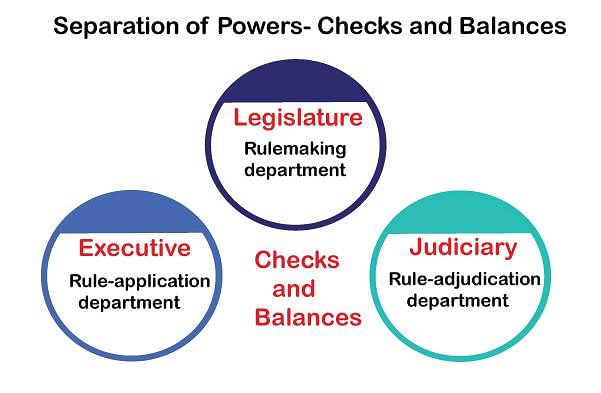
- Another important aspect of intelligent institutional design is: that a constitution must strike the right balance between certain values, norms and procedures as authoritative, and at the same time allow enough flexibility in its operations to adapt to changing needs and circumstances. Too rigid a constitution is likely to break under the weight of change; a constitution that is, on the other hand, too flexible, will give no security, predictability or identity to a people. Successful constitutions strike the right balance between preserving core values and adapting them to new circumstances. The Indian Constitution is described as ‘ a living’ document. By striking a balance between the possibility to change the provisions and the limits on such changes, the Constitution has ensured that it will survive as a document respected by people. This arrangement also ensures that no section or group can, on its own, subvert the Constitution.
Making of The Indian Constitution
- As far back as in 1928. Motilal Nehru and eight other Congress leaders drafted a constitution for India. In 1931, the resolution at the Karachi session of the Indian National Congress dwelt on how independent India’s constitution should look, like. Both these documents were committed to the inclusion of universal adult franchise, right to freedom and equality and to protecting the rights of minorities in the constitution of independent India. Thus some basic values were accepted by all leaders much before the Constituent Assembly met to deliberate on the Constitution.
- The familiarity with political institutions of the colonial rule also helped develop an agreement over the institutional design. The Indian constitution adopted many institutional details and procedures from colonial laws like the Government of India Act 1935. Years of thinking and deliberation on the’ framework of the constitution had another benefit. Our leaders gained the confidence to learn from other countries, but on our terms.
- Many of our leaders were inspired by the ideals of the French Revolution, the practice of parliamentary democracy in Britain and the Bill of right in the US. The socialist revolution in Russia had inspired many Indians to think of shaping a system based on social and economic equality. Yet they were not simply imitating what others had done. At each step, they were questioning whether these things suited our country. All these factors contributed to the making of our Constitution.
- The drafting of the document called the constitution was done by an assembly of elected representatives called the Constituent Assembly. Elections to the Constituent Assembly were held in July 1946. It held its first sitting on 9 December 1946 and reassembled as Constituent Assembly for divided Indian on 14 August 1947. Its members were elected by indirect election by the members of the Provisional Legislative Assemblies that had been established in 1935. The Constituent Assembly was composed roughly along the lines suggested by the plan proposed by the committee of the British cabinet, known as the Cabinet Mission.
- According to this plan:
 Some Facts of Making of the Constitutioni) Each Province and each Princely State or group of States were allotted seats proportional to the irrespective population roughly in the ratio of 1:1.000000. As a result’ the Provinces (that were under direct British rule) were to elect 292 members while the Princely States were allotted a minimum of 93 seats.
Some Facts of Making of the Constitutioni) Each Province and each Princely State or group of States were allotted seats proportional to the irrespective population roughly in the ratio of 1:1.000000. As a result’ the Provinces (that were under direct British rule) were to elect 292 members while the Princely States were allotted a minimum of 93 seats.
ii) The seats in each Province were distributed among the three main communities, Muslims, Sikhs and general, in proportion to their respective populations.
(iii) Members of each community in the Provisional Legislative Assembly elected their representatives by the method of proportional representation with the single transferable vote.
iv) The method of selection in the case of representatives of Princely States was to be determined by consultation.
Question for NCERT Summary: Why do we need a Constitution- 2
Try yourself:Why is the Indian Constitution referred to as a living document?
View Solution
Composition of the Constituent Assembly
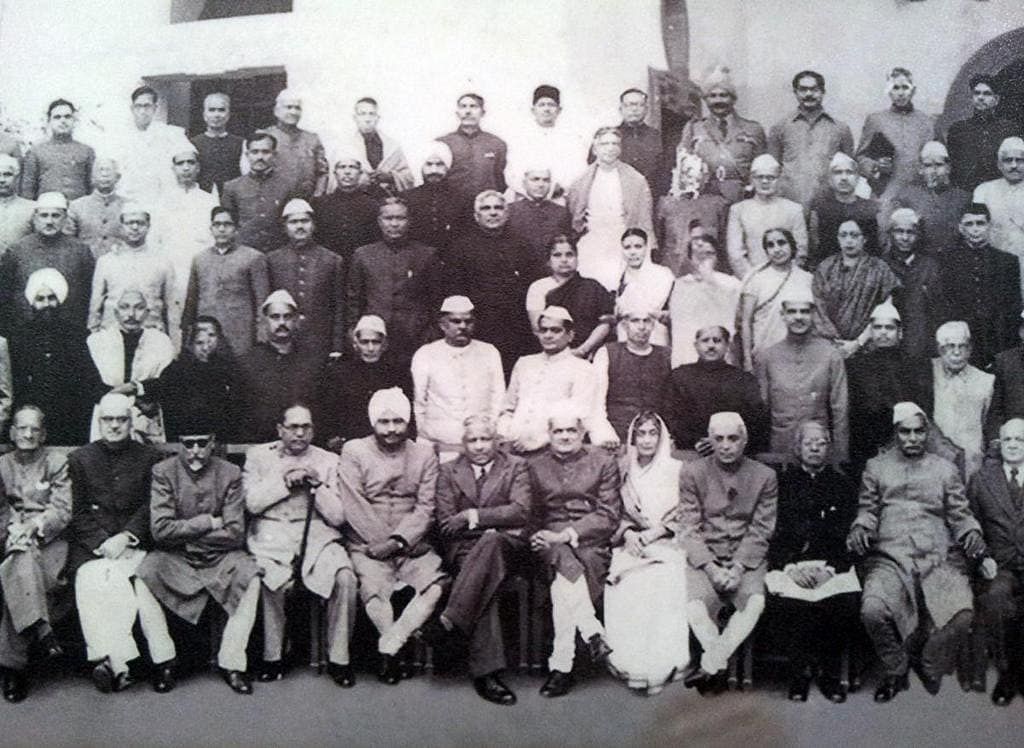 First Constituent Assembly
First Constituent Assembly- As a consequence of the Partition under the plan of 3 June 1947, those members who were elected from territories that fell under Pakistan ceased to be members of the Constituent Assembly. The numbers in the Assembly were reduced to 299 of which 284 were present on 26 November 1949 and appended their signature to the Constitution as finally passed. The Constitution was thus framed against the backdrop of the horrendous violence that the Partition unleashed on the sub-continent. But it is a tribute to the fortitude of the framers that they were not only able to draft a constitution under immense pressure but also learnt the right lessons from the unimaginable violence that accompanied Partition. The Constitution was committed to a new conception of citizenship, where not only would minorities be secure, but religious identity would have no bearing on citizenship rights. But this account of the composition of the Constituent Assembly that drafted the Constitution touches upon only the surface of how our Constitution was made.
- Although the members of the Assembly were not elected by universal suffrage, there was a serious attempt to make the Assembly a representative body. Members of all religions are given representation under the scheme described above; also, the Assembly had twenty-six members from what then known as the Scheduled Classes. In terms of the Congress dominated the Assembly occupying as many as eighty-two percent of the seats in the assembly after the Partition. The Congress itself was such a diverse party that it managed to accommodate almost all shades of opinion within it.
The Principle of Deliberation
- The authority of the Constituent Assembly does not come only from the fact that it was broadly, though not perfectly, representative. It comes from the procedures it adopted to frame the Constitution and the values its members brought to their deliberations. While in any assembly that claims to be a representative, a diverse section of the society should participate, it is equally important that they participate not only as representatives of their own identity or community. Each member deliberated upon the Constitution with the interests of the whole nation in mind. There were often disagreements amongst members, but few of these disagreements could be traced to members protecting their interests.
- There are legitimate differences of principle. And the differences were many: should India adopt a centralised or decentralised system of government? What should be the relations between the States and the centre? What should be the powers of the judiciary? Should the Constitution protect property rights? Almost every issue that lies at the foundation of a modem state was discussed with great sophistication. Only one provision of the Constitution was passed without virtually any debate: the introduction of universal suffrage (meaning that all citizens reaching a certain age, would be entitled to be voters irrespective of religion, caste, education, gender or income). So, while the members felt no need at all to discuss the issue of who should have the right to vote, every other matter was seriously discussed and debated. Nothing can be a better testament to the democratic commitment of this Assembly.
(i) Jhaverbhai Vallabhai Patel (1875-1950) born: Gujarat Minister of Home, Information and Broadcasting in the Interim Government. Lawyer and leader of Bardoli peasant satyagraha. Played a decisive role in the integration of the Indian princely states. Later: Deputy Prime Minister.
Minister of Home, Information and Broadcasting in the Interim Government. Lawyer and leader of Bardoli peasant satyagraha. Played a decisive role in the integration of the Indian princely states. Later: Deputy Prime Minister.
(ii) Abul Kalam Azad (1888-1958) born: Saudi Arabia Educationist, author and theologian; scholar of Arabic. Congress leader, active in the national movement. Opposed Muslim separatist politics. Later Education Minister in the first union cabinet.
Educationist, author and theologian; scholar of Arabic. Congress leader, active in the national movement. Opposed Muslim separatist politics. Later Education Minister in the first union cabinet.
(iii) T.T. Krishnamachari ( 1899-1974) born: Tamil Nadu
Member Drafting Committee. Entrepreneur and Congress leader. Later: Finance Minister in the Union Cabinet.
(iv) Rajendra Prasad (1884-1963) born: Bihar Chairman of the Constituent Assembly. Lawyer, known for his role in the Champaran satyagraha. Three times the president of Congress. Later: the first President of India.
Chairman of the Constituent Assembly. Lawyer, known for his role in the Champaran satyagraha. Three times the president of Congress. Later: the first President of India.
(v) JaIpal Singh (1903-1970) born: Jharkhand
A sportsman and educationist. Captain of the first national Hockey team. Founder President of Adivasi Maha Sabha.
Later: founder of Jharkhand Party.
(vi) H.C. Mookherjee (1887-1956) born: Bengal
Vice-Chairman of the Constituent Assembly. Reputed author and educationist. Congress leader. Member of All India Christian Council and Bengal Legislative Assembly. Later: Governor of West Bengal.
(vii) G. Durgabai Deshmukh (1909-1981) born: Andhra Pradesh
Advocate and public activist for women’s emancipation. Founder of Andhra Mahila Sabha. Congress leader. Later: Founder Chairperson of Central Social Welfare Board.
(viii) Baldev Singh (1901-1961) born: Haryana
A successful entrepreneur and leader of the Panthic Akali Party in the Punjab Assembly. A nominee of the Congress in the Constituent Assembly. Later: Defence Minister in the Union Cabinet.
(ix) Kanhaiyalal Maniklal Munshi (1887-1971 ) born: Gujarat
Advocate, historian and linguist. Congress leader and Gandhian. Later: Minister in the Union Cabinet. Founder of the Swatantra Party.
(x) Bhimrao Ramji Ambedkar (1891-1956) born: Maharashtra. Chairman of the Drafting Committee. Social revolutionary thinker and agitator against caste divisions and caste-based inequalities. Later: Law minister in the first, cabinet of post-independence India. Founder of the Republican Party of India.
Chairman of the Drafting Committee. Social revolutionary thinker and agitator against caste divisions and caste-based inequalities. Later: Law minister in the first, cabinet of post-independence India. Founder of the Republican Party of India.
(xi) Shyama Prasad Mukherjee (1901-1953) born: West Bengal
Minister for Industry and Supply in the Interim Government. Educationist and lawyer. Active in Hindu Mahasabha. Later: Founder President of Bhartiya Jana Sangh Party .
(xii) Jawaharlal Nehru (1889-1964) born: Uttar Pradesh Prime Minister of the interim government. Lawyer and Congress leader. An advocate of socialism, democracy and anti-imperialism. Later: First Prime Minister of India.
Prime Minister of the interim government. Lawyer and Congress leader. An advocate of socialism, democracy and anti-imperialism. Later: First Prime Minister of India.
(xiii) Sarojini Naidu (1879-1949) born: Andhra Pradesh
Poet, writer and political activist. Among the foremost women leaders in Congress. Later: Governor of Uttar Pradesh.
(xiv) Somnath Lahiri (1901- 1984) born: West Bengal
Writer and editor. Leader of the Communist Party of India. Later: Member of West Bengal Legislative Assembly.
Procedures
- The Constituent Assembly had eight major Committees on different subjects.
Usually, Jawaharlal Nehru, Rajendra Prasad, Sardar Patel, Maulana Azad or Ambedkar chaired these Committees. These were not men who agreed with each other on many things. Ambedkar had been a bitter critic of the Congress and Gandhi, accusing, them of not doing enough for the upliftment of Scheduled Castes. Patel and Nehru disagreed on many issues. Nevertheless, they all worked together. - Each Committee usually drafted particular provisions of the Constitution which were then subjected to debate by the entire Assembly. Usually, an attempt was made to reach a consensus with the belief that provisions agreed to by 411, would not be detrimental to any particular interests. Some provisions were subject to the vote. The Assembly met for one hundred and sixty-six days, spread over two years and eleven months.
Inheritance of the Nationalist Movement
- But no constitution is simply a product of the Assembly that produces it. An Assembly as diverse as the Constituent Assembly of India could not have functioned if there was no background consensus on the main principles the Constitution should enshrine. These principles were forged during the long struggle for freedom.
- In a way, the Constituent Assembly was giving concrete shape and form to the principles it had inherited from the nationalist movement. For decades preceding the promulgation of the Constitution, the nationalist movement had debated many questions that were relevant to the making of the constitution the shape and form of government India should have, the values it should uphold, the inequalities it should overcome. Answers forged in those debates were given their final form in the Constitution.
- Perhaps the best summary of the principles that the nationalist movement brought to the Constituent Assembly is the Objectives Resolution (the resolution that defined the aims of the Assembly) moved by Nehru in 1946. This resolution encapsulated the aspirations and values behind the constitution. Based on this resolution our Constitution gave institutional expression to the fundamental commitments: equality, liberty, democracy, sovereignty and cosmopolitan identity.
Institutional Arrangements
Institutional Arrangements
- The third factor ensuring the effectiveness of a constitution is a balanced arrangement of the institutions of government. The basic principle is that government must be democratic and committed to the welfare of the people.
- The Constituent Assembly spent a lot of time on evolving the right balance among the various institutions like the executive, the legislature and the judiciary. This led to the adoption of the parliamentary form aid the federal arrangement, which would distribute governmental powers between the legislature and the executive on the one hand and between the States and the central government on the other hand.
Provisions Borrowed from Constitutions of Different Countries
Question for NCERT Summary: Why do we need a Constitution- 2Try yourself:Where was the idea of emergency provisions in the Indian constitution borrowed from?
View Solution
The document NCERT Summary: Why do we need a Constitution- 2 | Indian Polity for UPSC CSE is a part of the UPSC Course Indian Polity for UPSC CSE.
All you need of UPSC at this link: UPSC
|
144 videos|611 docs|204 tests
|
FAQs on NCERT Summary: Why do we need a Constitution- 2 - Indian Polity for UPSC CSE
| 1. What is the significance of a balanced institutional design in the making of the Indian Constitution? |  |
Ans. A balanced institutional design in the making of the Indian Constitution ensures that power is distributed among different institutions in a way that prevents any one institution from becoming too powerful. This helps in maintaining a system of checks and balances, promoting stability and preventing abuse of power.
| 2. How was the Constituent Assembly of India composed during the making of the Constitution? |  |
Ans. The Constituent Assembly of India was composed of elected representatives from various provinces, nominated members representing different communities, and experts in different fields. This diverse composition ensured that different voices and perspectives were represented in the drafting of the Constitution.
| 3. What role did the principle of deliberation play in the making of the Indian Constitution? |  |
Ans. The principle of deliberation played a crucial role in the making of the Indian Constitution as it emphasized the importance of thoughtful discussion, debate, and consensus-building among the members of the Constituent Assembly. This ensured that the Constitution was a product of careful consideration and reflection.
| 4. How did institutional arrangements contribute to the making of the Indian Constitution? |  |
Ans. Institutional arrangements such as committees, drafting committees, and expert advice played a key role in the making of the Indian Constitution. These arrangements helped in organizing and streamlining the drafting process, allowing for in-depth discussions on various issues and facilitating the formulation of a comprehensive and well-thought-out Constitution.
| 5. Why is a Constitution necessary and what are some key functions it serves in a democratic society? |  |
Ans. A Constitution is necessary to provide a framework for governance, establish the structure of the government, define the rights and responsibilities of citizens, and set limits on the powers of the government. It serves to protect individual rights, ensure the rule of law, promote equality, and uphold democratic principles in a society.

|
Explore Courses for UPSC exam
|

|
Signup for Free!
Signup to see your scores go up within 7 days! Learn & Practice with 1000+ FREE Notes, Videos & Tests.
Related Searches
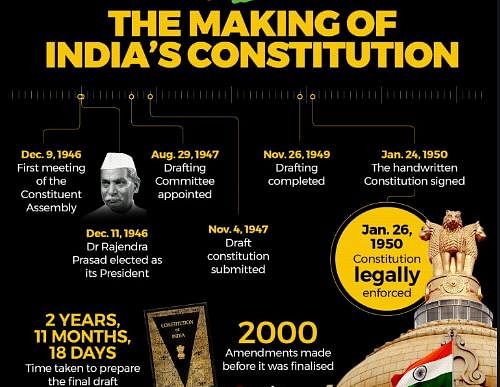
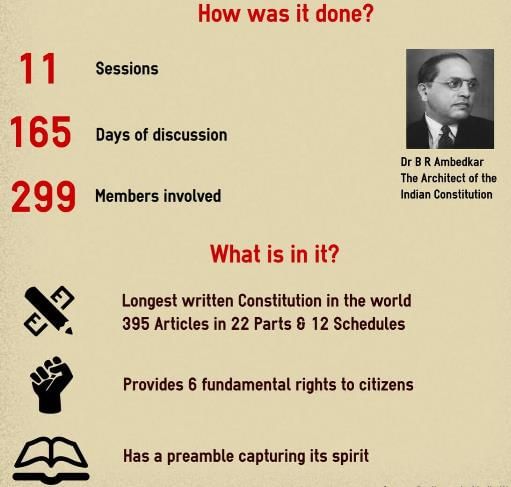
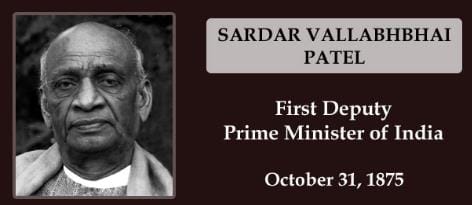 Minister of Home, Information and Broadcasting in the Interim Government. Lawyer and leader of Bardoli peasant satyagraha. Played a decisive role in the integration of the Indian princely states. Later: Deputy Prime Minister.
Minister of Home, Information and Broadcasting in the Interim Government. Lawyer and leader of Bardoli peasant satyagraha. Played a decisive role in the integration of the Indian princely states. Later: Deputy Prime Minister.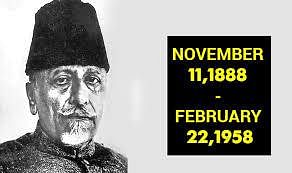 Educationist, author and theologian; scholar of Arabic. Congress leader, active in the national movement. Opposed Muslim separatist politics. Later Education Minister in the first union cabinet.
Educationist, author and theologian; scholar of Arabic. Congress leader, active in the national movement. Opposed Muslim separatist politics. Later Education Minister in the first union cabinet.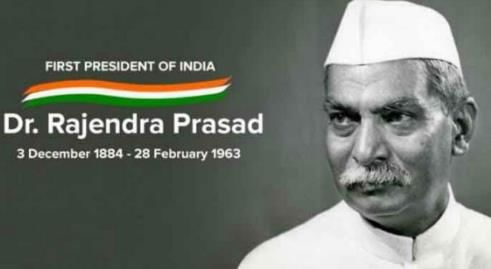 Chairman of the Constituent Assembly. Lawyer, known for his role in the Champaran satyagraha. Three times the president of Congress. Later: the first President of India.
Chairman of the Constituent Assembly. Lawyer, known for his role in the Champaran satyagraha. Three times the president of Congress. Later: the first President of India. Chairman of the Drafting Committee. Social revolutionary thinker and agitator against caste divisions and caste-based inequalities. Later: Law minister in the first, cabinet of post-independence India. Founder of the Republican Party of India.
Chairman of the Drafting Committee. Social revolutionary thinker and agitator against caste divisions and caste-based inequalities. Later: Law minister in the first, cabinet of post-independence India. Founder of the Republican Party of India.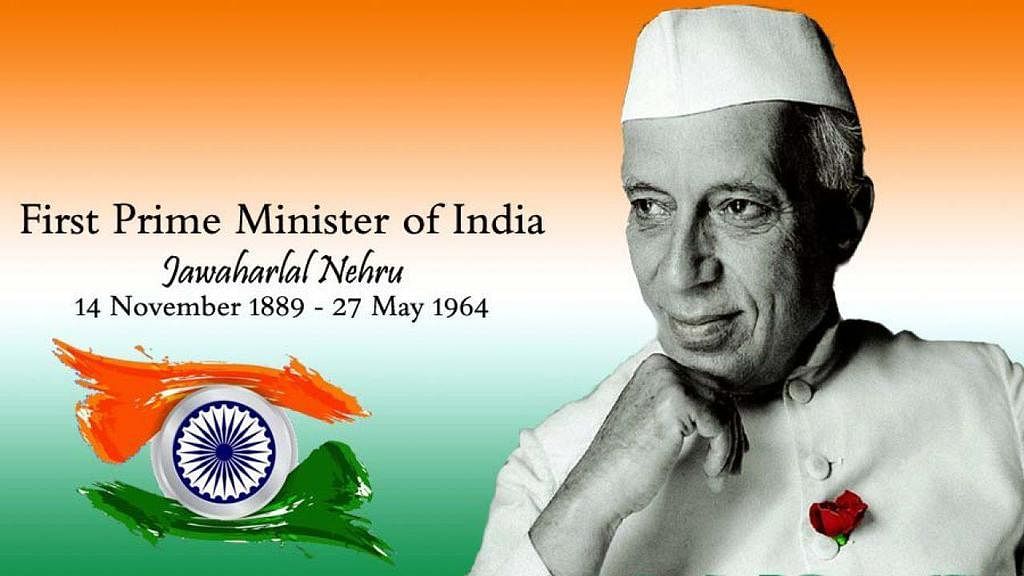 Prime Minister of the interim government. Lawyer and Congress leader. An advocate of socialism, democracy and anti-imperialism. Later: First Prime Minister of India.
Prime Minister of the interim government. Lawyer and Congress leader. An advocate of socialism, democracy and anti-imperialism. Later: First Prime Minister of India.












